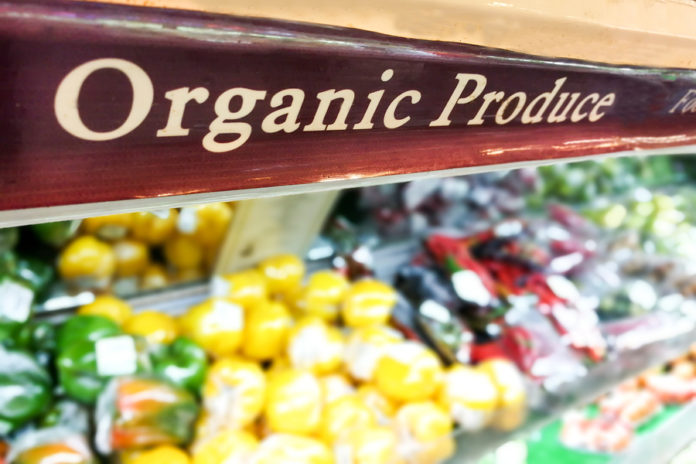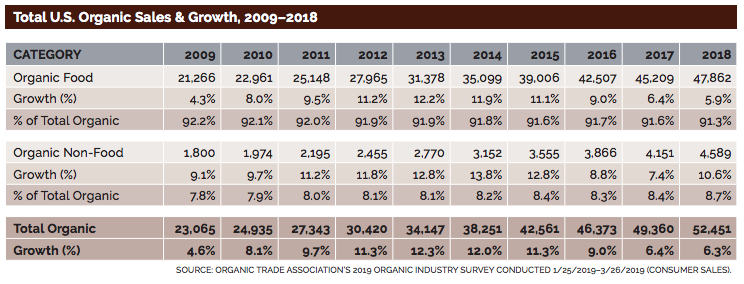
Organic sales approached $52.5 billion in 2018, marking the first time the category exceeded $50 billion, according to the Organic Trade Association’s 2019 Organic Industry Survey.
Not all of that was food, but most of it was. Organic food sales grew 5.9%, reaching almost $47.9 billion, while organic non-food sales grew 10.6% to nearly $4.6 billion. Growth in organics outpaced growth in the food industry as a whole.
In a press release, the OTA suggested that the results indicate that “organic is no longer a niche market.” Not only do organics comprise almost 6% of all food sold in the United States, but these products are sold everywhere. “Today’s consumers can find organic products – food and non-food items — in every aisle of their grocery stores. They can choose organic in their favorite big box store, their club warehouse store, even in their neighborhood convenience store, and increasingly on the internet,” the association noted.
Here are a few more results from the survey:
- At $17.4 billion, produce continues to be the largest category for organics sales, making up 36% of the total market. Organic fruits and vegetables account for almost 15% of all produce sold in the United States, and the sales are limited to fresh products — demand for organic frozen, canned, and dried produce is also growing.
- Organic dairy and egg sales slowed a bit, with eggs performing better than dairy. The OTA notes that Millennial buyers are moving toward plant-based dairy alternatives, which increases the importance of innovation in this category.
Overall, the latest results confirm what the industry has known for some time — that consumers, especially younger ones, are demanding more from food companies. This “more” includes things like clean labels, transparency, sustainability, high quality, and social activism, all of which the OTA says are associated with organic products.








